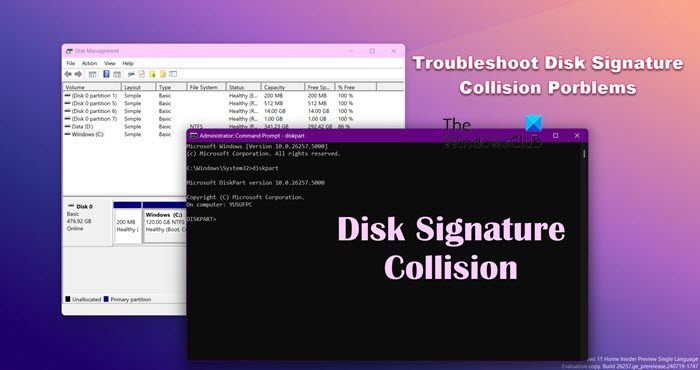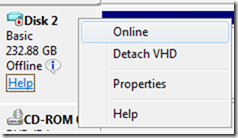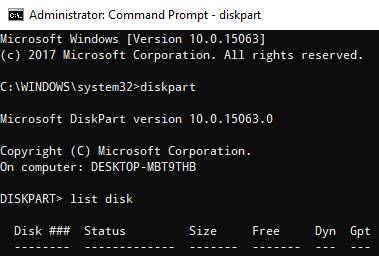Each storage device attached to your computer is allocated a unique number, called Digital Signature. The unique disk identifier is stored as part of the Master Boot Record (MBR). Operating systems use disk signatures to identify and distinguish the different data storage devices, and hard disk drives in the computing system for data access. In this post, we will discuss what is Digital Signature Collision and how to fix Disk Signature Collision problems.

What is Disk Signature Collision
Disk cloning has become a common practice for upgrading to a larger hard disk drive. Drives are cloned to make a similar copy and use the cloned copy and original drive together. Also, many virtualization tools are being used to virtualize the physical hard disk drive. The physical hard drives are virtualized to create virtual hard disk drives, and several virtual machine clones are created with the existing Virtual hard disk drives. As these are identical copies, the chances are that these copies may have identical disk signatures. When you use both disks with identical signatures at the same time, you may run into the Disk Signature Collision problem.
Disk collisions are rare as the Windows system doesn’t allow two disks to function at the same time when they have similar disk signatures. In older Windows versions like XP and Windows Vista, signature collisions often go unnoticed as the Windows system automatically replaces the signature of the disk that reports duplicate signatures.
How to fix Disk Signature Collision on Windows 11/10
However, in Windows 10 and Windows 11, Disk Signature Collisions are handled differently. When two storage devices have identical disk signatures, the secondary drive that creates the collision will be turned offline and cannot be mounted for use until the collision is fixed.
You may run into the following disk collision error messages in Windows 11/10.
- The boot selection failed because a required device is inaccessible
- The disk is offline because it has a signature collision
- This disk is offline because it has a signature collision with another disk that is online.
To fix the disk collision problem, you can make use of the command-line utility called diskpart in Windows PowerShell or Command Prompt to view and change the signature or you can make use of the Master Boot Record in the Windows Registry. You can also use Windows Disk Management Utility to change the signature.
Next, we will explain how to fix the disk signature collision problem.
Change Disk Signature with Disk Managment Utility
Open Run and type diskmgmt.msc. Click Ok to open Disk Management.
Right-click on the disk that is marked as Offline or Missing.

Select Online command from the drop-down menu.

On selecting the option Online, Windows will generate a new disk signature.
Read: How to take a Drive Offline or bring a Disk Online in Windows
Change Disk signature using Diskpart
Open Command Prompt and Run as Administrator. Type the command Diskpart to open Diskpart and hit Enter.

Type the following command to display all the available disks on the system:
list disk
Now note the problematic disk number with the status Offline from the list and write the following command – where x is the offline disk – to select the offline disk:
Select disk x
For example, if you type the command select disk 1, the command prompt will display the message as Disk 1 is now the selected disk.

Type this command to display the disk’s signature:
Uniqueid disk
![]()
To change the disk’s signature and set the disk online, type the command unique disk ID= (New signature) where (New signature) is the new ID in hexadecimal.
For example, you can set the new ID as uniqueid disk ID= 1456ACBD.
If you have given the wrong format ID, the prompt will display the error:
The specified identifier is not in the correct format. Type the identifier in the correct format: in hexadecimal form for an MBR disk or as a GUID for a GPT disk.
Once done, the disk will be online. Reboot the system.
Similar issue: The disk is offline because of policy set by an administrator.
That’s all.
How do I check my disk number?
You can open File Explorer > This PC to get your disk number, but if you want to get more details along with the Serial number of the drive, or you want to have all your disks in one place, we will make use of a query. To do so, open Command Prompt and run wmic diskdrive get model,serialNumber,size,mediaType.
Also Read: Diskpart has encountered an error, The parameter is incorrect.
Leave a Reply